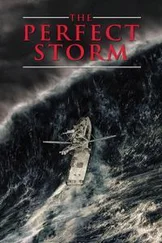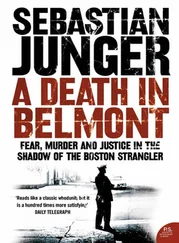The Yaka Chine operation is expected to take twenty-four hours, and then the men will be picked up by helicopter and dropped on the upper slopes of the Abas Ghar and an intersecting ridge called the Sawtalo Sar. There’s intel about cave complexes up there and weapons caches and supply routes that cross over to the Shuryak and then on into Pakistan. The largest cave is supposed to have electricity and finished walls and a boulder at the entrance that can be moved into position with a car jack. When the fighters want to disappear, they supposedly jack the boulder into place from the inside and wait until the danger has passed. Chosen Company will be blocking enemy movement in the Shuryak Valley, to the east, and Destined will be in the Chowkay, to the south. The men of Battle Company will be on unfamiliar terrain with enormous loads on their backs chasing a fluid and agile enemy, and almost every advantage enjoyed by a modern army will be negated on the steep, heavily timbered slopes of the Abas Ghar.
Caldwell tells the men that if there’s no air they’ll be walking, but no one laughs because they’re not sure it’s a joke. Could the Army be dumb enough to make them walk the entire valley and then climb the Abas Ghar with 120 pounds on their backs? Each man will carry enough food, water, and ammo for a day or two, and after that they’ll be resupplied by “speedball”: body bags of supplies thrown out of moving helicopters. There will be two full platoons on the mountain as well as Kearney and his entire headquarters element, a squad of scouts, and a couple of platoons of ANA. There will be long-range bombers and F-15s and -16s from Diego Garcia, in the Indian Ocean, as well as Apache helicopters flying out of JAF and A-10 Warthogs and an AC-130 Spectre gunship based at Bagram. It’s a huge, weeklong operation, and it’s virtually certain that some men who are alive at this moment will be dead or injured by the time it’s over. Even without an enemy it’s hard to move that many men and aircraft around a steep mountain range and not have something bad happen.
The men spend the last hours of daylight packing their gear and making sure their ammo racks are correctly rigged. Chuck Berry is playing on someone’s laptop inside the brick-and-mortar. Donoho helps Rice adjust his rack, cinching it down in the back until it’s balanced and snug. Rice’s assault pack weighs seventy pounds and his weapon, ammo, and body armor will be at least another forty or fifty on top of that. Buno has a pack that looks so heavy, Rueda can’t resist coming over and trying to lift it. Moreno bets Hijar ten bucks that Hoyt can’t do twenty pull-ups on one of the steel girders in their barracks. He does, barely. The men paint their faces with greasepaint but Patterson makes them wipe it off and then they just sit and talk and go through the slow, tense countdown until the birds arrive. Some men listen to music. Some just lie on their cots staring at the ceiling. In some ways the anticipation feels worse than whatever may be waiting for them down in Yaka Chine or up on the Abas Ghar, and every man gets through it in his own quietly miserable way.
Shortly after eight o’clock the first Chinooks come clattering into the KOP from the north, rotors ablaze with sparks from the dust that they kick up as they land. First Platoon hustles on with their gear and the huge machines lift off and make the run south with their Apache escorts and then they come back to the KOP for the next load. At 8:41 p.m. the men of Second Platoon file into the back of their Chinook and sit facing each other on web seats with their night vision scopes down. The infrared strobes on the outside of the aircraft pump light out into the night in a long slow heartbeat. The aircraft fights its way up into the sky and tilts south and puts down ten minutes later at LZ Toucans. The men move out, grabbing their packs as they go, and a minute later they’re on the mountainside listening to the wind in the trees and the occasional squelp of the radios. Yaka Chine is three or four clicks away. The men fall into line and start walking north.
Kearney has signal intelligence teams scattered around the valley, three LRAS devices watching the town, and surveillance drones circling overhead. He is directing everything by radio from the summit of Divpat, a flat-topped mountain to the east. Almost immediately, drones spot two fighters moving toward Kearney’s position and a Spectre gunship, circling counterclockwise overhead, drills them with 20 mm rounds. That begins a game of cat-and-mouse where American airpower tries to prevent fighters from crossing open ground and gaining the protection of the houses in town. Later that night a group of fighters make it to a house outside Yaka Chine, and Kearney is granted permission by the brigade commander to destroy it with cannon fire from a Spectre gunship. Later, a B-1 bomber drops 2,000 pounds of high explosive on a ridgeline, where more insurgents had been observed positioning themselves for an attack.
The men of Second Platoon walk most of the night to the rip and boom of ordnance farther up the valley, and at dawn they find themselves close enough to human habitation to hear roosters crowing. A surveillance drone motors endlessly overhead. The men move slowly and awkwardly along the hillsides under their heavy loads but eventually come out onto a corduroy road built of squared-off timbers that serves as a skidway for the enormous trees that get cut on the upper ridges. The walking is easy but they’re wide open and after a while they leave the road and climb a brutally steep hillside to a grassy upland plateau. First Platoon comes into contact from a farm complex above town and they return fire, and then Second Platoon clears the buildings and waits in the bright fall sunlight while chickens peck past them in the dirt and cows groan from the alleyways.
Eventually a delegation of village elders tracks down Piosa and his men and leads them to a house with three children with blackened faces and a woman lying stunned and mute on the floor. Five corpses lie on wooden pallets covered by white cloth outside the house, all casualties from the airstrikes the night before. Medics start treating the wounded while Piosa’s men continue sweeping the village for weapons. They find eight RPG rounds and a shotgun and an old German pistol and some ammo and a pair of binoculars and an old Henri-Martin rifle — all contraband, but not the huge cache they were expecting. Prophet picks up radio traffic of one Taliban fighter asking another, “Have they found it, have they found it?” Obviously, they have not.
The civilian casualties are a serious matter and will require diplomacy and compensation. Second Platoon spends the night at a hilltop compound overlooking Yaka Chine, and the next morning Apaches come in to look around and then a Black Hawk lands on a rooftop inside the village. Ostlund jumps out like a strange camouflaged god and climbs down a wooden ladder to the ground. With him is a member of the provincial government — the first time a representative of any government, past or present, has made it past the mouth of the valley. Kearney arrives with Ostlund and quickly moves to the front of twenty or thirty locals with the weapons arrayed at his feet. There are old men with their beards dyed orange and eyes like small black holes and young men who don’t smile or talk and are clearly here to see, up close, the men they’re trying to kill from a distance, and young boys who dart around the edges, seemingly unmindful of the seriousness of things. Kearney is unshaven and shadowed with dirt from two nights on Divpat. The Americans are by far the dirtiest men there.
The locals sit with their backs against a stone wall and Kearney crouches in front of them to speak but soon stands back up. “I’m here to tell you guys why I did what I did. I’m Captain Kearney, the U.S. commander for the Korengal,” he says, and waits for the translator to finish. “When I come into villages and I find RPGs and weapons that are shot at myself and at the ANA, that indicates that there’s bad people in here. Good people don’t carry these weapons.”
Читать дальше
Конец ознакомительного отрывка
Купить книгу












